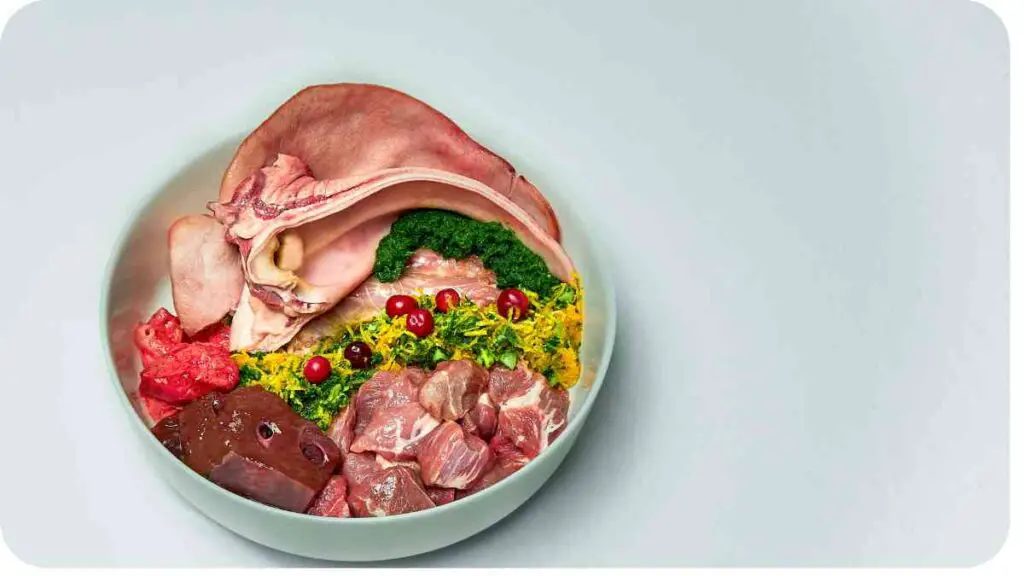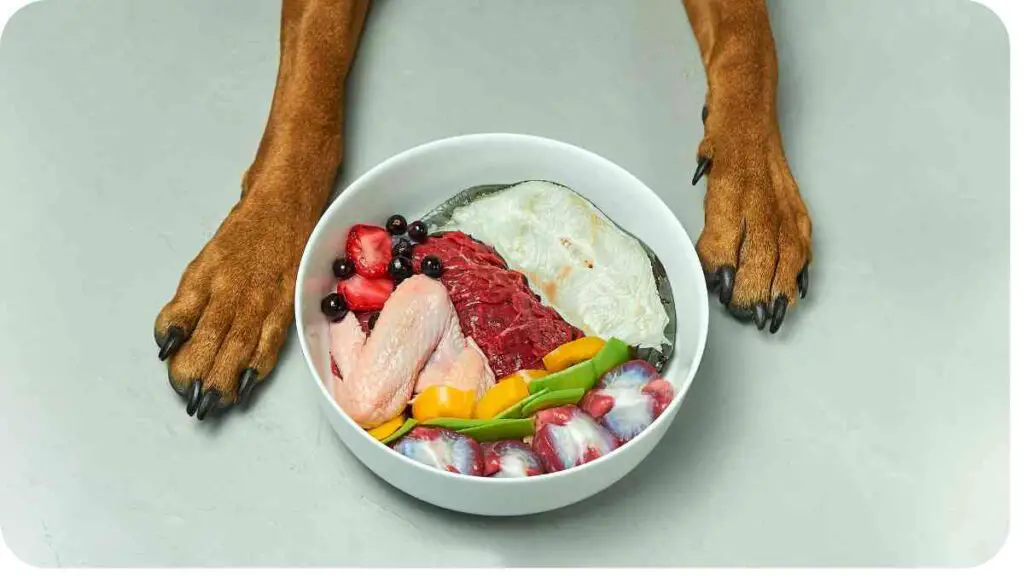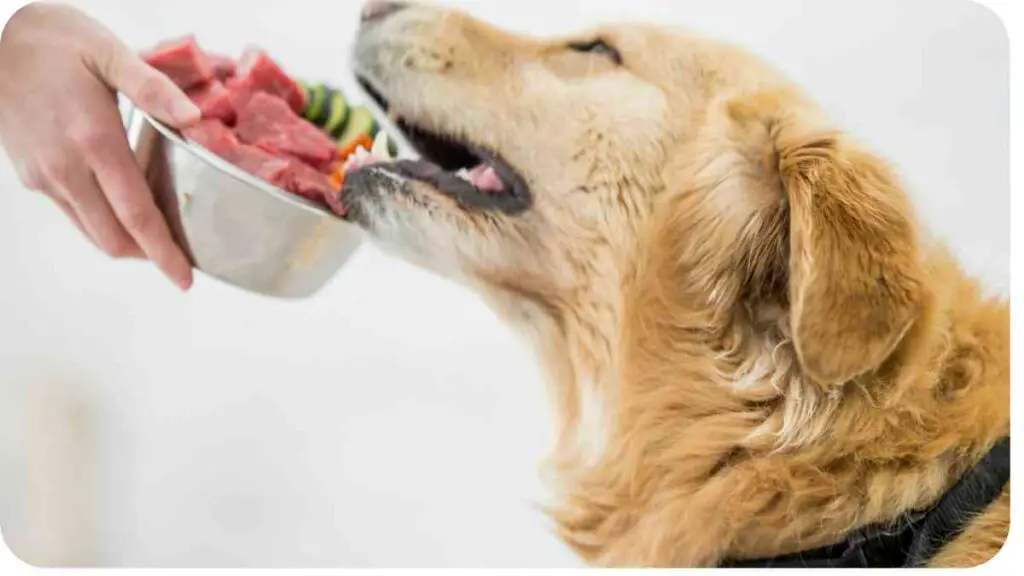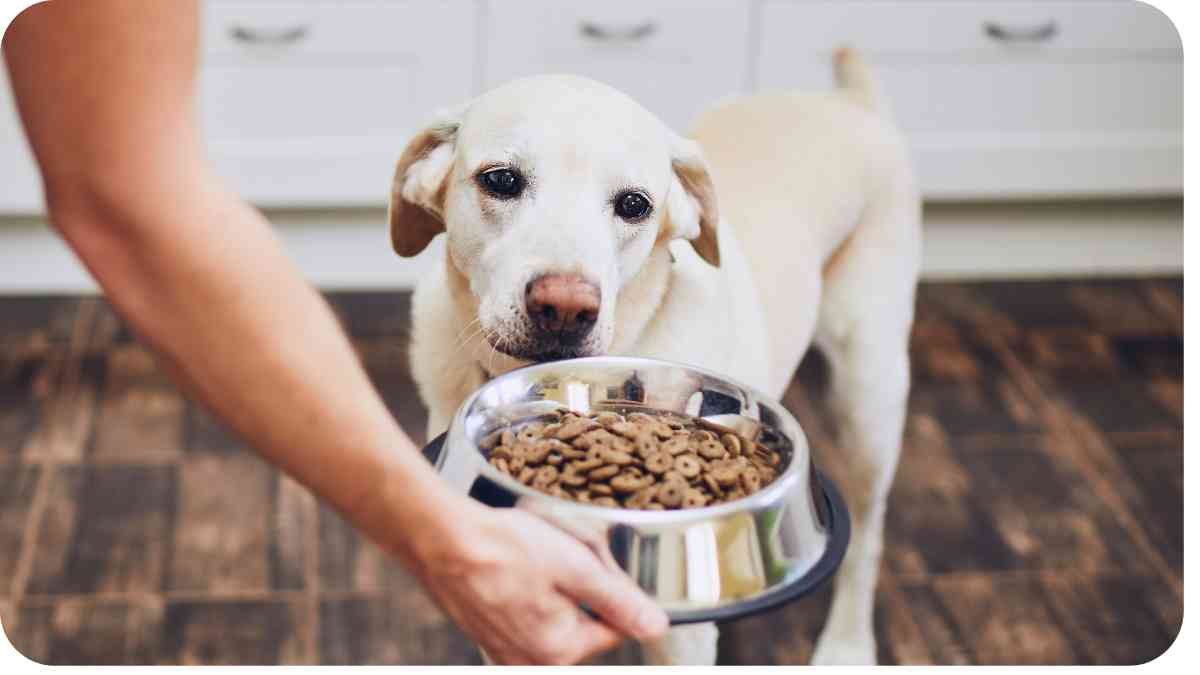Welcoming a furry friend into your family is a joyous occasion, but when your beloved pet starts experiencing skin issues, it can be distressing for both you and your four-legged companion. Finding the right hypoallergenic dog food can make a world of difference in alleviating these skin problems and ensuring your dog’s overall well-being.
| Key Takeaways |
|---|
| 1. Choosing hypoallergenic dog food can significantly improve your dog’s skin health and overall well-being. |
| 2. Look for formulas with novel protein sources, limited ingredients, and grain-free options to minimize allergens. |
| 3. Consult with your veterinarian before making any dietary changes for your dog, especially if they have chronic skin issues. |
| 4. Transition your dog to a new diet gradually to prevent digestive upset and monitor their progress closely. |
| 5. Keep track of your dog’s response to the new diet and seek professional guidance if needed to ensure the best outcomes. |
2. Understanding Hypoallergenic Dog Food

Hypoallergenic dog food is specially formulated to minimize potential allergens that could trigger adverse reactions in sensitive dogs. These reactions often manifest as skin issues such as itching, redness, hot spots, and inflammation. By eliminating common allergens like grains, soy, and artificial additives, hypoallergenic dog food aims to provide a gentler diet for dogs with sensitivities.
When exploring noises that agitate German Shepherds, understanding their reactions to various stimuli can be enlightening. What Noises Do German Shepherds Hate? This awareness extends to potential triggers for skin issues, emphasizing the importance of hypoallergenic diets for sensitive individuals.
| Ingredient | Description |
|---|---|
| Grain-free | Eliminates common allergens like wheat and corn |
| Limited ingredients | Reduces the risk of triggering allergies |
| Novel protein sources | Introduces proteins less likely to cause reactions |
3. Common Skin Issues in Dogs
Before delving into hypoallergenic dog food options, it’s essential to understand the common skin issues that can plague our canine companions. These issues may arise due to various factors, including allergies, parasites, infections, and environmental irritants. Some of the most prevalent skin problems in dogs include:
- Atopic Dermatitis: A chronic allergic skin disease characterized by itching, scratching, and inflamed skin, often triggered by environmental allergens like pollen, dust mites, or mold.
- Food Allergies: Dogs can develop allergies to specific ingredients in their diet, leading to skin reactions such as itching, rashes, and ear infections.
- Flea Allergy Dermatitis: Dogs with flea allergy dermatitis are hypersensitive to flea saliva, causing severe itching and skin irritation even with minimal flea exposure.
- Contact Dermatitis: Contact with certain substances like chemicals, plants, or grooming products can result in localized irritation or allergic reactions on the skin.
Identifying Food Allergies in Dogs
Determining if your dog is suffering from food allergies requires careful observation and sometimes, a process of elimination. Keep an eye out for symptoms such as:
- Persistent itching or scratching
- Red, inflamed skin
- Ear infections
- Chronic gastrointestinal issues like diarrhea or vomiting
If you suspect your dog has food allergies, consider conducting an elimination diet under the guidance of a veterinarian to identify the specific trigger ingredients.
The lifespan of German Shepherds is a comprehensive subject, revealing insights into their health and well-being. How Long Do German Shepherds Live: A Comprehensive Guide This includes considerations for skin conditions, underscoring the relevance of hypoallergenic food in ensuring longevity and vitality.
| Symptom | Possible Cause |
|---|---|
| Persistent itching | Allergic reaction to food ingredients |
| Red, inflamed skin | Sensitivity to certain proteins or grains |
| Ear infections | Allergies to food or environmental factors |
| Gastrointestinal issues | Digestive intolerance to specific ingredients |
5. Importance of Hypoallergenic Dog Food

Switching to hypoallergenic dog food can have a significant impact on your dog’s overall health and well-being. Here are some key reasons why hypoallergenic food is beneficial for dogs with skin issues:
- Reduced Allergic Reactions: Hypoallergenic dog food eliminates common allergens such as grains, soy, and artificial additives, reducing the likelihood of triggering allergic reactions and skin issues.
- Improved Skin and Coat Health: By providing a diet tailored to your dog’s sensitivities, hypoallergenic food can help alleviate itching, inflammation, and other skin problems, promoting a healthier skin barrier and a shinier coat.
- Digestive Health: Many hypoallergenic dog foods are formulated with easily digestible ingredients, which can be gentler on sensitive stomachs and reduce the risk of digestive issues such as diarrhea or vomiting.
- Supports Overall Well-being: A balanced diet free from potential allergens ensures that your dog receives essential nutrients without compromising their health, helping them thrive and live a happier, more comfortable life.
Understanding why German Shepherds may exhibit biting behavior involves delving into their training and trust-building processes. Why German Shepherds Sometimes Bite: Understanding Training and Building Trust Stress-related issues, including skin problems, can be addressed through appropriate training and diet choices, such as hypoallergenic food.
| Benefit | Description |
|---|---|
| Reduced allergic reactions | Elimination of common allergens minimizes skin issues |
| Improved skin and coat health | Alleviates itching and inflammation, promotes a shiny coat |
| Digestive health | Easily digestible ingredients reduce gastrointestinal issues |
| Supports overall well-being | Ensures a balanced diet for optimal health and comfort |
6. Key Ingredients to Look for
When selecting hypoallergenic dog food for your furry friend, it’s essential to scrutinize the ingredients list to ensure it meets their dietary needs. Here are some key ingredients to look for when choosing hypoallergenic dog food:
- Novel Protein Sources: Opt for dog foods that feature novel protein sources such as duck, venison, rabbit, or salmon. These proteins are less commonly used in commercial dog foods, reducing the risk of triggering allergic reactions in dogs with food sensitivities.
- Limited Ingredients: Choose dog foods with limited ingredients to minimize the number of potential allergens your dog is exposed to. Look for formulas that contain a short list of high-quality ingredients, making it easier to identify and avoid trigger ingredients.
- Grain-Free Formulas: Many hypoallergenic dog foods are grain-free, eliminating common allergens like wheat, corn, and soy. Grain-free formulas are often easier for dogs to digest and may be suitable for those with grain sensitivities or allergies.
- Omega-3 Fatty Acids: Look for dog foods fortified with omega-3 fatty acids, such as fish oil or flaxseed. Omega-3s help support skin health by reducing inflammation and promoting a shiny, healthy coat.
| Ingredient | Description |
|---|---|
| Novel protein sources | Less commonly used proteins to reduce the risk of allergic reactions |
| Limited ingredients | Formulas with a short list of ingredients to minimize potential allergens |
| Grain-free formulas | Eliminates common allergens like wheat, corn, and soy |
| Omega-3 fatty acids | Supports skin health and promotes a shiny coat |
7. Popular Brands of Hypoallergenic Dog Food
With the growing demand for hypoallergenic dog food, several reputable brands have emerged, offering a variety of options to cater to dogs with skin issues. Here are some popular brands known for their hypoallergenic formulations:
- Royal Canin Veterinary Diet: Royal Canin offers a range of veterinary diets, including hypoallergenic formulas tailored to dogs with food sensitivities. Their formulas typically feature novel protein sources and limited ingredients to minimize allergic reactions.
- Hill’s Prescription Diet: Hill’s Prescription Diet offers hypoallergenic dog food options designed to support skin health and manage food sensitivities. Their formulas are crafted with high-quality ingredients and are often recommended by veterinarians.
- Purina Pro Plan Veterinary Diets: Purina Pro Plan Veterinary Diets provides hypoallergenic formulas that prioritize digestibility and skin health. Their recipes feature carefully selected ingredients to minimize the risk of triggering allergies in sensitive dogs.
- Blue Buffalo Basics: Blue Buffalo Basics offers limited ingredient formulas specifically designed for dogs with food sensitivities. Their hypoallergenic recipes are free from common allergens like chicken, beef, and grains, making them suitable for dogs with skin issues.
- Natural Balance Limited Ingredient Diets: Natural Balance offers a range of limited ingredient diets formulated to cater to dogs with allergies and food sensitivities. Their hypoallergenic formulas feature novel protein sources and are free from artificial additives.
| Brand | Description |
|---|---|
| Royal Canin Veterinary Diet | Offers hypoallergenic formulas with novel protein sources |
| Hill’s Prescription Diet | Crafted to support skin health and manage food sensitivities |
| Purina Pro Plan Veterinary Diets | Prioritizes digestibility and skin health |
| Blue Buffalo Basics | Limited ingredient formulas free from common allergens |
| Natural Balance Limited Ingredient Diets | Features novel protein sources and no artificial additives |
8. Homemade Hypoallergenic Dog Food Recipes
For pet owners who prefer a more hands-on approach or want to ensure complete control over their dog’s diet, homemade hypoallergenic dog food can be a great option. Here are some simple recipes to consider:
- Turkey and Sweet Potato Recipe:
- Ingredients:
- 1 lb ground turkey
- 2 cups cooked sweet potatoes, mashed
- 1 cup peas
- 1 tablespoon olive oil
- 2 tablespoons chopped parsley
- Instructions:
- In a large skillet, heat olive oil over medium heat.
- Add ground turkey and cook until browned.
- Stir in cooked sweet potatoes and peas, and cook for an additional 5 minutes.
- Remove from heat and let cool before serving. Garnish with chopped parsley.
- Ingredients:
- Salmon and Quinoa Recipe:
- Ingredients:
- 1 lb cooked salmon, flaked
- 2 cups cooked quinoa
- 1 cup cooked green beans, chopped
- 1 tablespoon coconut oil
- 2 tablespoons chopped dill
- Instructions:
- In a large bowl, combine flaked salmon, cooked quinoa, and chopped green beans.
- Drizzle with melted coconut oil and toss to coat.
- Sprinkle chopped dill over the mixture and stir to combine.
- Serve at room temperature.
- Ingredients:
- Duck and Pumpkin Stew:
- Ingredients:
- 1 lb cooked duck meat, shredded
- 2 cups canned pumpkin puree
- 1 cup cooked carrots, diced
- 1 cup cooked peas
- 1 tablespoon coconut oil
- Instructions:
- In a large pot, combine shredded duck meat, pumpkin puree, diced carrots, and cooked peas.
- Stir in melted coconut oil and mix well.
- Cook over low heat for 10-15 minutes, stirring occasionally, until heated through.
- Let cool before serving to your furry friend.
- Ingredients:
The developmental journey of a German Shepherd encompasses various stages, each significant for their growth and well-being. How Long Does It Take for a German Shepherd to Grow Fully? Skin conditions may evolve during this process, highlighting the importance of proper nutrition, potentially including hypoallergenic diets.
| Recipe | Ingredients |
|---|---|
| Turkey and Sweet Potato Recipe | Ground turkey, sweet potatoes, peas, olive oil, parsley |
| Salmon and Quinoa Recipe | Salmon, quinoa, green beans, coconut oil, dill |
| Duck and Pumpkin Stew | Duck meat, pumpkin puree, carrots, peas, coconut oil |
9. Transitioning Your Dog to a New Diet

Switching your dog to a new diet, especially one aimed at addressing skin issues, requires a gradual transition to prevent digestive upset and ensure a smooth adjustment. Follow these steps to transition your dog to a hypoallergenic diet:
- Gradual Transition: Start by mixing a small amount of the new hypoallergenic dog food with your dog’s current food. Gradually increase the proportion of the new food while decreasing the old food over the course of 7-10 days.
- Monitor for Reactions: Keep a close eye on your dog during the transition period for any signs of adverse reactions or digestive issues. If you notice any unusual symptoms, consult with your veterinarian for guidance.
- Stay Consistent: Once your dog has fully transitioned to the new diet, stick to it consistently to allow time for their system to adjust and for you to accurately assess its impact on their skin health.
- Provide Ample Water: Ensure your dog has access to fresh water at all times, especially during the transition period, to support digestion and overall hydration.
| Transition Step | Description |
|---|---|
| Gradual transition | Mix new food with current food, gradually increase new food proportion |
| Monitor for reactions | Watch for adverse reactions or digestive issues during transition |
| Stay consistent | Stick to the new diet consistently for accurate assessment |
| Provide ample water | Ensure access to fresh water to support digestion and hydration |
10. Monitoring Your Dog’s Progress
Once you’ve transitioned your dog to a hypoallergenic diet, it’s crucial to monitor their progress closely to assess the effectiveness of the new food in addressing their skin issues. Here’s how you can track your dog’s progress:
- Observation: Pay close attention to your dog’s behavior and physical condition. Look for improvements in their skin health, such as reduced itching, inflammation, or hot spots.
- Keep a Journal: Maintain a journal or log to record any changes you observe in your dog’s skin condition. Note any improvements or setbacks, as well as any other relevant factors like changes in activity level or environment.
- Regular Check-ups: Schedule regular check-ups with your veterinarian to evaluate your dog’s overall health and discuss any concerns related to their skin issues. Your vet can provide valuable insights and adjustments to your dog’s diet if necessary.
- Consultation with a Dermatologist: If your dog’s skin issues persist or worsen despite dietary changes, consider consulting with a veterinary dermatologist for specialized care and treatment options.
| Monitoring Method | Description |
|---|---|
| Observation | Watch for improvements in skin health such as reduced itching or inflammation |
| Keep a journal | Record changes in your dog’s skin condition and relevant factors |
| Regular check-ups | Schedule appointments with your veterinarian to evaluate overall health |
| Consultation with a dermatologist | Seek specialized care if skin issues persist or worsen |
11. Consulting with a Veterinarian
While hypoallergenic dog food can be beneficial for addressing skin issues, it’s essential to seek guidance from a veterinarian before making any significant dietary changes for your furry friend. Here’s why consulting with a vet is crucial:
- Professional Assessment: A veterinarian can conduct a thorough examination of your dog’s skin condition and overall health to determine the underlying cause of their skin issues.
- Allergy Testing: If food allergies are suspected, your vet may recommend allergy testing to identify specific allergens triggering your dog’s reactions.
- Personalized Recommendations: Based on their assessment and diagnostic findings, your veterinarian can provide personalized recommendations tailored to your dog’s unique needs, including dietary changes and potential treatment options.
- Monitoring and Follow-up: Your vet can help monitor your dog’s progress over time and make adjustments to their treatment plan as needed to ensure optimal health and well-being.
When considering the cost of baby German Shepherds, it’s essential to prioritize responsible breeding practices. How Much Do Baby German Shepherds Sell For? This includes addressing potential health issues like skin sensitivities through appropriate diet choices, such as hypoallergenic formulas, ensuring the well-being of these beloved companions.
| Reason for Consultation | Description |
|---|---|
| Professional assessment | Conduct thorough examination and determine underlying cause of skin issues |
| Allergy testing | Identify specific allergens triggering your dog’s reactions |
| Personalized recommendations | Provide tailored dietary changes and treatment options based on assessment |
| Monitoring and follow-up | Track progress and make adjustments to treatment plan as needed |
12. FAQs about Hypoallergenic Dog Food
As pet owners consider switching to hypoallergenic dog food to address their furry friend’s skin issues, they often have questions about this specialized diet. Here are some frequently asked questions (FAQs) about hypoallergenic dog food:
- What is hypoallergenic dog food?
- Hypoallergenic dog food is specially formulated to minimize potential allergens that could trigger adverse reactions in sensitive dogs, such as skin issues, digestive problems, or food allergies.
- What ingredients are typically found in hypoallergenic dog food?
- Hypoallergenic dog food often contains novel protein sources like duck, venison, or salmon, limited ingredients to minimize allergens, and may be grain-free to eliminate common allergens like wheat, corn, and soy.
- How can I tell if my dog needs hypoallergenic food?
- If your dog experiences chronic skin issues such as itching, redness, or inflammation, or exhibits signs of food allergies such as ear infections or gastrointestinal problems, it may benefit from a hypoallergenic diet.
- Are there any side effects of switching to hypoallergenic dog food?
- While most dogs transition to hypoallergenic food without any issues, some may experience temporary digestive upset or changes in stool consistency during the transition period. Monitoring your dog closely and gradually introducing the new food can help minimize these side effects.
- Can I feed my dog homemade hypoallergenic food?
- Yes, you can prepare homemade hypoallergenic dog food using recipes that feature novel protein sources, limited ingredients, and grain-free options. However, it’s essential to ensure the recipes are nutritionally balanced and meet your dog’s dietary needs.
| FAQ | Answer |
|---|---|
| What is hypoallergenic dog food? | Specially formulated to minimize potential allergens for sensitive dogs |
| Typical ingredients | Novel protein sources, limited ingredients, and grain-free options |
| Signs your dog needs it | Chronic skin issues, food allergies, or gastrointestinal problems |
| Side effects | Temporary digestive upset during transition period |
| Homemade options | Yes, with balanced recipes featuring novel proteins and limited ingredients |
13. Conclusion
Finding the right hypoallergenic dog food for your furry friend’s skin issues is essential for their health and well-being. By selecting a diet tailored to their specific needs and sensitivities, you can help alleviate itching, inflammation, and other uncomfortable symptoms, allowing your dog to live a happier, more comfortable life.
Whether you opt for commercial hypoallergenic dog food from trusted brands or choose to prepare homemade recipes, consulting with a veterinarian is crucial to ensure you’re making the best dietary choices for your dog. Your vet can provide personalized recommendations, conduct allergy testing if needed, and help monitor your dog’s progress over time.
Remember to transition your dog to a new diet gradually, monitor their progress closely, and seek professional guidance if you have any concerns or questions along the way. With the right hypoallergenic dog food and proper care, you can help your furry companion enjoy a healthier, itch-free life.
Further Reading
- PetMD – Best Foods for Dog Allergies: Explore a comprehensive guide to the best foods for dogs with allergies, including information on hypoallergenic options and dietary considerations.
- JustRussel – How Do I Choose the Right Hypoallergenic Dog Food?: Learn valuable tips and advice on selecting the right hypoallergenic dog food for your furry friend, including factors to consider and common misconceptions.
- NBC News – Dog Food Allergies: Gain insights into dog food allergies and how to address them, including recommendations from experts and reviews of hypoallergenic dog food brands.
FAQs
What are common signs of dog food allergies?
Common signs of dog food allergies include itching, redness, gastrointestinal issues, and chronic ear infections.
How can I determine if my dog has food allergies?
Your veterinarian can conduct allergy testing or recommend an elimination diet to identify specific food allergens triggering your dog’s reactions.
Is grain-free dog food always hypoallergenic?
While grain-free dog food may be suitable for some dogs with allergies, it’s not necessarily hypoallergenic, as dogs can be allergic to other ingredients besides grains.
Can homemade dog food be hypoallergenic?
Yes, homemade dog food can be hypoallergenic if it’s carefully formulated with novel protein sources, limited ingredients, and grain-free options.
How long does it take to see improvement after switching to hypoallergenic dog food?
The timeframe for seeing improvement in your dog’s skin issues after switching to hypoallergenic food can vary depending on the individual dog and the severity of their allergies. Generally, you may start to notice improvements within a few weeks to a couple of months.

I’m Dr. Hellen James, I’ve spent my career working with dogs, and I’ve seen first-hand how important it is to understand the individual needs of each breed. I want to share my knowledge of dog breeds with you so that you can make informed decisions about which dog will be best for your household and lifestyle.

